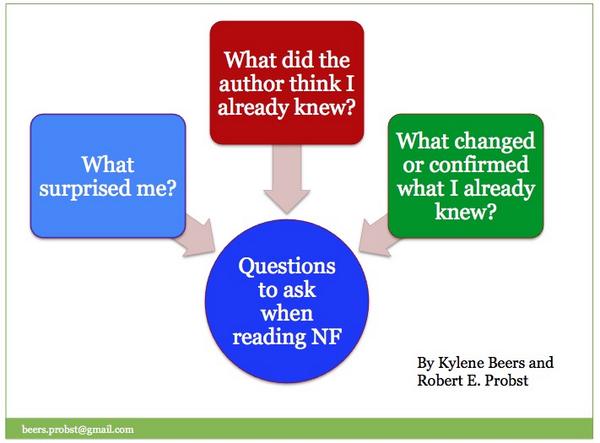MSM 288: Search, Forms, Images, PhotoMath- Your Life on Earth.
Jokes You Can Use:
What is the difference between a cat and a comma?
One has the paws before the claws and the other has the clause before the pause.
What’s the best or fastest way to tune a banjo?
With wirecutters.
What could you call the small rivers that flow into the Nile?
Juveniles.
Heard about the math teacher with constipation? Worked it out with a pencil.
A chicken walks into a library, goes up to a librarian and says, “Book book book.” The librarian decides that the chicken wants a book so he gives the chicken a book and the chicken walks away. About ten minutes later the chicken comes back with the book, looking a bit agitated, saying, “Book book book.” The librarian decides the chicken wants another book so he takes the old book back and gives the chicken another book. The chicken walks out the door. Ten minutes later the chicken comes back again, very agitated, saying, “Book book book!” so quickly it almost sounds like one word. The chicken puts the book on the librarian’s desk and looks up – waiting for another book. This time the librarian gives the chicken another book and decides that something weird is happening. He follows the chicken out the door and into the park, all the way to the pond. In the pond is a frog sitting on a lily pad. The chicken gives the book to the the frog, who then says, “Reddit, reddit.”
Q: Why did the pig leave the costume party?
A: Because everyone thought he was a boar.
Q: How do astronomers organize a party?
A: They planet.
Q: What do you call a Filipino contortionist?
A: A Manila folder.
Eileen Award:
- Twitter: Trevor Mattea
Advisory:
Reader
Star College athlete’s take on reading.
https://www.youtube.com/watch?v=uPLwQm2y83E#t=132
FROM: http://www.teachingquality.org/content/blogs/bill-ferriter/what-growth-mindset-looks-action
How to do nothing
…being alone with a screen is not quite being alone at all, so the art of taking joy in one’s own company slips further and further out of reach.
http://www.brainpickings.org/2014/10/24/how-to-do-nothing-with-nobody-all-alone-by-yourself/
Your Life on Earth
Enter some data to see how the person and the world has changed. This could be done with students or with historical figures.
http://www.bbc.com/earth/story/20141016-your-life-on-earth
Middle School Science Minute
by Dave Bydlowski (k12science or davidbydlowski@mac.com)
MIDDLE SCHOOL SCIENCE MINUTE-CAUSE AND EFFECT
I was recently reading the September, 2014 issue of “Science Scope,” a magazine written for middle school science teachers, published by the National Science Teachers Association.
In this issue, I read the “Editor’s Roundtable: Cause and Effect,” written by Inez Liftig, Editor of Science Scope. In the roundtable, she shares her thoughts and the research which supports that the teaching of cause and effect cannot be an afterthought in instruction; it must be considered an integral part of lesson planning integrated seamlessly with other dimensions of a lesson.
From the Twitterverse:
| Tracie Cain @TracieGCainRT @skimbriel: Use Aurasma to create presentation on historical figure in lieu of living wax museum #edcampdallas #leapesc11 |
| Russel Tarr @russeltarrCSI Web Adventures – Lessons in Forensic Science: http://tinyurl.com/4xrgc5u |
| Dr. Justin Tarte @justintarteHow to make that redo/retake policy actually work! http://goo.gl/JYHlHD #edchat #unionrxi #sblchat |
| Susie Highley @shighleyMy fav resource from #sljsummit so far: @livebinders by @jlgdeborahford Booktalks to go http://www.livebinders.com/play/play?id=1198808 … #tlchat |
| Paul Bogush @paulbogushDoc for “Assessments that don’t stink” http://goo.gl/l9FsOf #edcampseacoast |
| Clay Shirky @cshirkyI just heard little Chinese girls belting Let It Go. It’s their London Calling, a signal flare of rebellion, the global punk of girlhood. |
| Karen Bosch @karlyb30 Techniques to Quiet a Noisy Class | Edutopia http://www.edutopia.org/blog/30-techniques-quiet-noisy-class-todd-finley … |
| Real Life English @RealLifeEng[New Podcast] Learn how to express all of your favorite body noises with the newest episode of RealLife Radio. http://ow.ly/Dj8Mg |
| Jennifer Dorman @cliotechCheck out TED-Ed’s awesome interactive periodic table, with videos for every one of the 118 elements! http://ed.ted.com/periodic-videos via @TED_ED |
| Brenda Dyck @bdyck“@millerg6: Technology And Video Games Make Kids Think Differently About Old Questions #educ23253 #eder679 http://zite.to/1nROWkF ” |
| Sue Waters @suewaters Sep 3For more free image sources check out The Ultimate Directory of Free Image Sources http://www.theedublogger.com/2014/07/09/the-ultimate-directory-of-free-image-sources/ … |
| #mschat every Thursday at 8:00 pm Eastern Standard Time. And as Troy says, “The Twitter never stops!” |
Strategies:
Google Search Tips
Can be useful for students and you.
Resources:
Try the New Add-ons for Google Forms
Applications for Education
The Form Limiter Add-on mentioned above is useful for delivering timed assessments. Form Limiter can also be used to close the form when you a designated number of submissions have been made. That option is useful when you’re using Google Forms to create capped registration lists.
gMath for Google Forms is another that teachers will find useful. gMath allows you create and insert graphs and mathematical expressions into your Google Forms. That feature is one that math teachers have wanted for years.
http://www.freetech4teachers.com/2014/10/try-new-add-ons-for-google-forms.html#.VEmfD5PF_5k
PhotoMath
PhotoMath reads and solves mathematical expressions by using the camera of your mobile device in real time. It makes math easy and simple by educating users how to solve math problems.
ReadWorks
Contains lessons and units K-6. This also includes Standards alignment. Additionally, they have resources that are aligned to grade level/strategy. These can be printed.
Random Thoughts . . .


